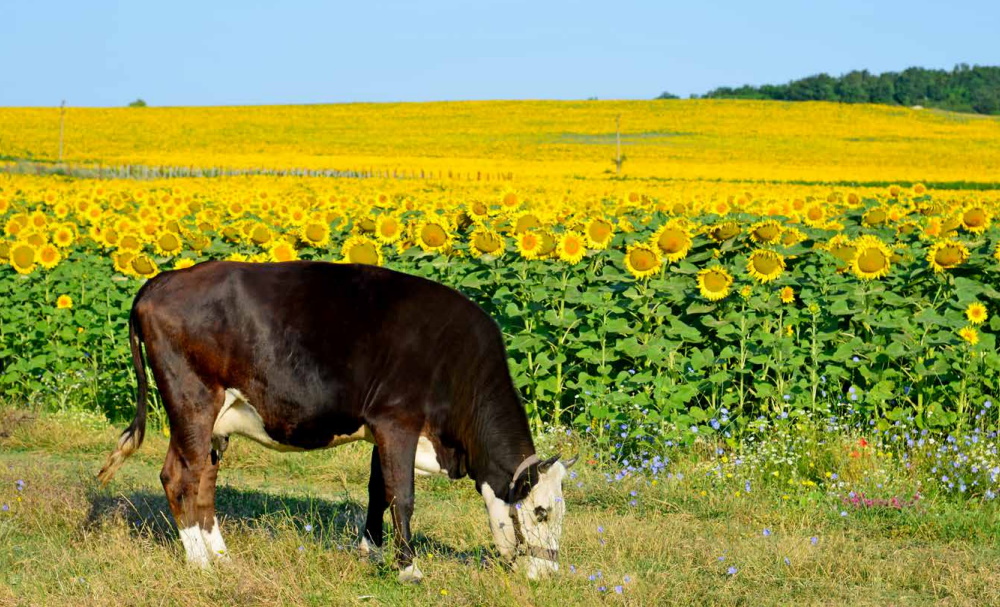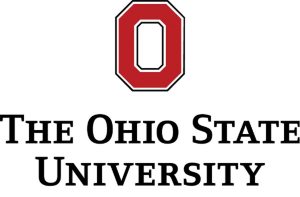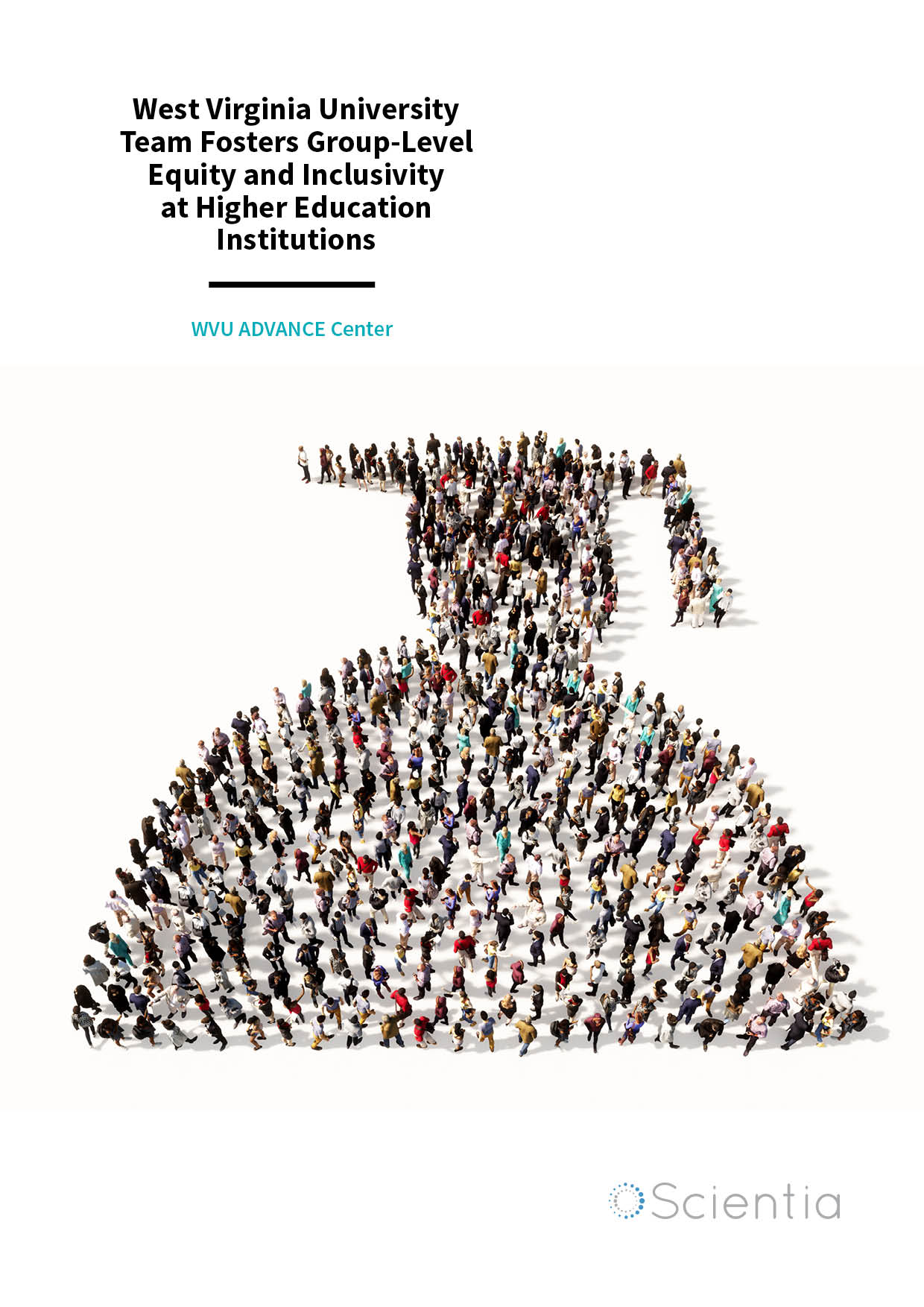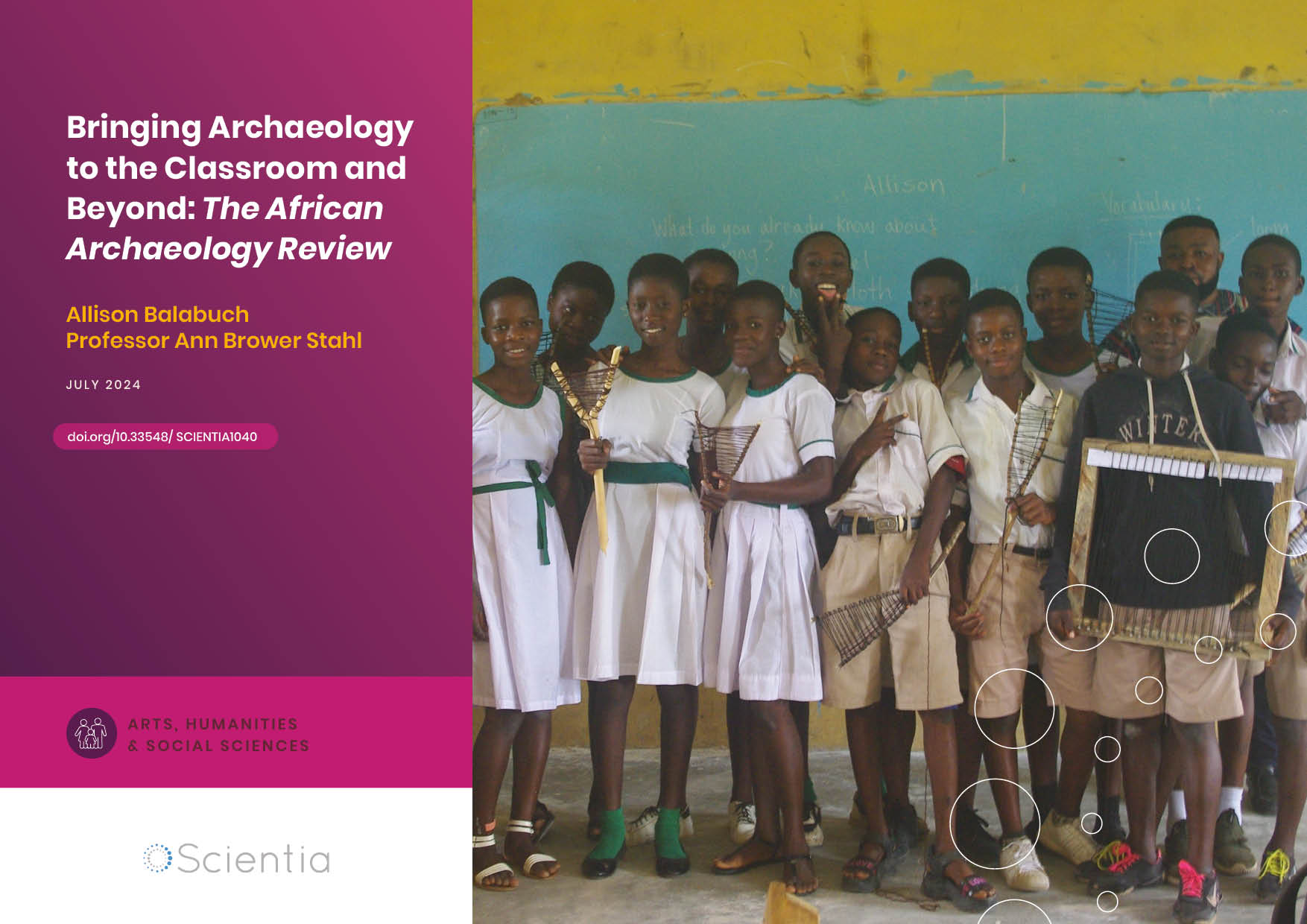Dr Marília Chiavegato – Integrating Sustainability with Productivity in Crop and Animal Farming
The demand on agricultural systems to increase the food supply has risen sharply as the global population continues to grow. However, as agricultural systems increase productivity, they also emit more greenhouse gases and exacerbate climate change. Simultaneously meeting food supply demands and reducing environmental impact in agricultural settings is one of the most important issues of our time. Dr Marília Chiavegato of The Ohio State University has dedicated her career to studying the ecological components of agricultural ecosystems, called ‘agroecosystems’. Her team’s findings will aid the development of management practices that not only boost productivity, but also lower the environmental impact associated with conventional agriculture.
Agroecosystem Management
Simultaneously addressing the global food crisis and climate change requires that we look at agroecosystems through a new lens. Though agricultural settings are human-made, they are still complex and dynamic ecosystems. Thus, just as in natural systems, all components of the ecosystem such as the soil structure, plant diversity and animal populations, interact with one another to modify the landscape and any associated ecological services.
These components can have a large influence on agricultural output, such as livestock meat yields, and significant environmental impacts, such as the amount of greenhouse gas emissions. Moreover, there are social, political, and economic considerations that influence agroecosystems that are typically not encountered in natural ecosystems.
Additionally, climate change will undoubtedly impact agricultural settings, reducing our ability to grow food, and forcing us to change how we manage land. An increase in flooding, drought and depleted soil all need to be considered when planning for the future. Therefore, it is important that agroecosystems are resilient to the shocks and stressors of a changing climate, while also maintaining high levels of productivity. Prior to making land management decisions, we must increase our knowledge of the mechanisms underpinning agroecosystems, and how these might change with a warming planet.
Dr Marília Chiavegato and her lab at The Ohio State University have used methods based on a systems approach, in which management strategies are monitored on farms rather than simulated, to begin to tackle these important questions and address prominent knowledge gaps. Dr Chiavegato’s team aims to better understand how the interaction of ecological factors, such as plant root structure and soil quality, ultimately affect farm productivity and environmental impacts. In doing so, we can better design sustainable and effective management strategies that promote resiliency and productivity in agroecosystems.
In their recent work, Dr Chiavegato and her colleagues have used multidisciplinary methods to track both greenhouse gas emissions and ecological aspects of agroecosystems managed using different strategies. By teasing apart the mechanisms underpinning agroecosystems, Dr Chiavegato’s work contributes both to ecological theory and to applied management practices. Her recent work focuses on flood-prone systems in the midwestern region of the USA and grasslands in the tropics.

Flooding in Agroecosystems
A significant amount of land grazed by cattle and sheep is prone to flooding. For example, In the midwestern US, flood-prone grazed lands contain productive forage for cattle, and provide ecosystem services such as trapping sediment, providing habitat, and storing carbon in the flooded soil and roots of the plants.
However, despite the fact that they are ubiquitous and important agroecosystems, flood-prone regions are generally managed in the same way as areas that are not prone to flooding. Given the fact that floods can change the plant composition of an area and modify the soil chemistry and microbiology, these areas require specific management strategies compared to lands that do not experience these changes.
Improved and specific strategies are particularly needed in flood-prone areas that are grazed, as we still do not understand how flooding and grazing can interact and affect one another. Additionally, in many areas, climate change is expected to increase the amount of intense rainfall events. Thus, not only are increased flood events more likely, they will also be more severe, increasing the prevalence of these areas.
To address this knowledge gap, Dr Chiavegato and her colleagues are creating a framework to understand how a series of flooding events will initiate a series of changes in an agroecosystem’s ecological pools, such as the soil or plant life. The framework will then track how these changes will interact to modify farm output, such as the quality of forage and meat, and environmental outputs, including greenhouse gas emissions.
To provide data to build the framework, the team will monitor greenhouse gas emissions, forage quality, organic matter content, and other important variables in flood-prone and non-flood-prone grazed pastures in Southern and Northern Ohio. Ultimately, the aim of the work is to understand the effects of recurring flooding on the quality of the air, soil and forage. This understanding will allow the team to develop strategic grazing management options to increase the productivity and sustainability of these areas for current and future conditions.
This project also represents an overarching theme of Dr Chiavegato’s: the importance of increasing our knowledge of the structure and behaviour of agroecosystems before recommending management strategies.

Sustainable Intensification
Sustainable intensification describes the process of increasing agricultural yields through methods that reduce adverse environmental impacts, such habitat destruction and greenhouse gas emissions. For example, in dairy farm systems, there has been an effort to increase the quality and quantity of milk produced while simultaneously reducing the amount of methane, a potent greenhouse gas, that is emitted from the digestive systems of cattle. Such research requires that cattle and the grass they graze are studied synchronously.
To optimise light capture, grasses first increase their leaf surface area, and finally, elongate their stem to reach maximum vertical growth. However, typically, the stems of the grass are less digestible for cattle than are their leaves.
In a recent study, Dr Chiavegato and her colleagues hypothesised that grass that is not allowed to reach the final stage of stem elongation will not only provide more nutritious forage for the cattle, but will also be more digestible and reduce cattle methane emissions. Thus, grazing strategies that manage grass height has the potential to provide cattle with more nutrient-rich forage, reducing their methane emissions and potentially improving the quality of their milk.
To test their hypothesis, the researchers implement mowing treatments on elephant grass pastures in Brazil. They then allowed the cattle to graze on treated plots, while other cattle grazed on control plots in which the grass was not manipulated. In plots that were managed, cows emitted 21% less methane per kilogram of milk they produced, and the milk yield increased by a whopping 51%. Thus, the team found that this strategic grazing management was successful in optimising the output of the farm, while also reducing greenhouse gas emissions.

Cattle Density and Greenhouse Gas Emissions
Optimising sustainable grassland management requires that we not only focus on the characteristics of the grass, but also those of the grazed animals. The number of cattle on a farm, known as stocking, is an important and easily manipulated variable in agricultural management. Stocking density, which describes the number of cattle per area of land, and the number of times cattle are moved per day have been linked to the amount of greenhouse gas emissions from grassland ecosystems.
To compare the effects of cattle management on greenhouse gas emissions, Dr Chiavegato and colleagues from Michigan State University monitored the movement of three greenhouse gases – carbon dioxide, nitrous oxide and methane – through two different systems that had different cattle stocking densities. The researchers also monitored ecological variables, including soil organic matter and nitrogen content, to test the hypothesis that fewer cattle per hectare would lead to reduced greenhouse gas emissions.
‘We looked at multiple sources of greenhouse gas emissions (soil and animal) and multiple gases simultaneously,’ says Dr Chiavegato. ‘There were trade-offs between sources and gases, in a way that in the end, no differences were found between the systems. This holistic view is unique to our study.’
However, they did not account for carbon sequestration into the soil. In this situation, greenhouse gases could be captured from the atmosphere, converted into organic matter and stored in the soil, offsetting the emissions released from the farm. Thus, the study highlighted the need for incorporating the capture and storage of greenhouse gases into our models for farm emissions. These types of studies are instrumental in illustrating which variables we still need to study more before we can quantify, and thereby manage, the environmental impact of agroecosystems.
Striking the Right Balance
The seemingly paradoxical situation of increasing agricultural productivity while reducing the environmental impact of agriculture is an urgent and complex global problem. Its solution, however, first requires that we study agroecosystems as ecological systems with a variety of interacting components.
Increased knowledge of these systems will also allow us to better predict how they may react to weather pattern changes that are undoubtedly being brought on by climate change. Dr Chiavegato has dedicated her career to unravelling these complex interactions with the applied goal of designing sustainable management strategies for a variety of agricultural settings. Her foundational work has already led to management strategies that decrease the footprint of agroecosystems and increase their productivity – a difficult, yet crucial, balance to strike.
Reference
https://doi.org/10.33548/SCIENTIA738
Meet the researcher

Dr Marília B. Chiavegato
Department of Horticulture and Crop Science
Department of Animal Sciences
The Ohio State University
Columbus, OH
USA
Dr Marília Chiavegato started her academic career in Brazil, where she received an MS in Applied Chemistry, with a focus on agriculture and the environment, at the University of São Paulo. In 2014, she graduated with her PhD in Animal Science from Michigan State University. After returning to Brazil for a postdoctoral position at her alma mater, she began her current position as an Assistant Professor at The Ohio State University in the Department of Horticulture and Crop Science, with a joint appointment in the Department of Animal Science. An overarching theme of Dr Chiavegato’s work is to improve the ecological sustainability of agricultural systems without sacrificing farm output. Through her systems-approach research, in which different aspects of an agricultural ecosystem are monitored, she aims to design effective agricultural land-management strategies. She has advised undergraduate, masters, and doctoral students and has a robust publication profile commensurate with her contributions to the field.
CONTACT
E: chiavegato.1@osu.edu
W: https://hcs.osu.edu/our-people/marília-chiavegato
KEY COLLABORATORS
Dr Doug Jackson-Smith, The Ohio State University
Dr Anthony J. Parker, The Ohio State University
Dr Mark Sulc, The Ohio State University
Dr Jason Rowntree, Michigan State University
Dr Steve Lyon, The Ohio State University
FURTHER READING
GFS Congio, CDA Batalha, MB Chiavegato, A Berdnt, PPA Oliveira, RTS Frighetto, TMR Maxwell, P Gregorini, SC Da Silva, Strategic grazing management towards sustainable intensification at tropical pasture-based dairy systems, Science of the Total Environment, 2018, 636, 872.
MB Chiavegato, JE Rowntree, WJ Powers, Carbon flux assessment in cow-calf grazing systems, Journal of Animal Science, 2015, 93, 4189.

Want to republish our articles?
We encourage all formats of sharing and republishing of our articles. Whether you want to host on your website, publication or blog, we welcome this. Find out more
Creative Commons Licence
(CC BY 4.0)
This work is licensed under a Creative Commons Attribution 4.0 International License. 
What does this mean?
Share: You can copy and redistribute the material in any medium or format
Adapt: You can change, and build upon the material for any purpose, even commercially.
Credit: You must give appropriate credit, provide a link to the license, and indicate if changes were made.
More articles you may like
Dr Ralf Adam | New Technologies Shaping the Future of Oral Hygiene
Understanding the efficiency of various toothbrush technologies is essential for achieving optimal oral health. Dr Ralf Adam, who leads a dedicated team at Procter & Gamble in Germany, is keen to investigate the complexities of these technologies. His team have provided new insights into the best toothbrush types for plaque removal and the maintenance of gum health. By highlighting the importance of informed oral care decisions and ongoing investigations, this vital research works towards ensuring everyone can achieve a brighter, healthier smile.
WVU ADVANCE Center | West Virginia University Team Fosters Group-Level Equity and Inclusivity at Higher Education Institutions
Despite ongoing efforts to broaden participation in the academy, many groups remain underrepresented. More needs to be done to ensure that all faculty and students succeed in institutions of higher education. The WVU ADVANCE Center is an academic hub at West Virginia University, which provides services, events, mentorship opportunities, and other initiatives that promote the sense of belonging that leads to thriving faculty and students.
Dr Olalla Castro-Alvaredo | Measuring Entanglement: Symmetry-Resolved Entropy
Dr Olalla Castro-Alvaredo of the City University of London (UK) and her collaborators are advancing our understanding of an important phenomenon of quantum mechanical systems known as entanglement and, especially, its mathematical measures. Symmetry-resolved entanglement entropy is one such measure. Their study focuses on special quantum states which are excited with respect to a ground state. The research shows how the entanglement amongst quantum particles can be measured and assesses the contribution to the entanglement of quasiparticle excitations, particularly in the presence of additional symmetries.
Allison Balabuch – Professor Ann Brower Stahl | Bringing Archaeology to the Classroom and Beyond: The African Archaeology Review
The African Archaeology Review (AAR) journal recently celebrated its 40th anniversary. To mark this occasion, a special issue was compiled with an innovative theme: Archaeology for Education. To achieve this, the AAR editorial team assembled a group of academic researchers in archaeology with the proposition of writing articles collaboratively with educators that would make their research centred on Africa’s rich pasts accessible for use in school learning. The goal is to change the stories we tell about Africa both within and outside the continent.




